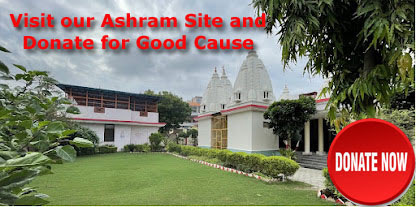Dr. Shanker Adawal
4.1
Introduction
4.1.1 As
per Brihat Parashar Hora Shatra, sage
Maitreya requested great sage Parashar to teach an easier method of
the otherwise complex astrology, which can be understood and applied by people
of even lower/ medium intelligence. The answer was a simple mathematical model,
the Ashtakvarga system, which can be
operated by a greater number of people. In the previous chapter, we have seen
the effects of transit with reference to natal Moon/ Sun/ Ascendant. It is
therefore, logical that such benefic places for each planet should be
considered from all the planets (including itself) and the Ascendant (which
represents the fastest moving point of a horoscope). However Rahu & Ketu
are not considered because they do not have any physical mass of their own.
Thus each planet is under the influence from eight sources, and hence the name Ashtakvarga system. This system provides
an excellent tool to study the results/ future trends indicated by the
transiting planets to a horoscope.
4.1.2 A
planet in any horoscope is affecting all the 12 houses, all the seven planets
and the ascendant in varying degrees. Thus on each planet the sources of
influence would be 12 x 8 = 96. Some of these influences may be benefic, while
others would be malefic. Ashtakvarga,
in an elegant simplicity, synthesizes the influences of the seven planets, the
ascendant and 12 houses and then goes on to quantify a vastly improved result.
The fundamental principle is that no planet or its placing in a house is
eternally good or bad. The planets have their own mutual relationships. This
relationship gets modified by their mutual natal placement and w.r.t. lagna. The system has an added advantage in that
it does away with minor mistakes in birth time, as it does not bother about
longitudes of lagna & planets. Each planet has some benefic places and
throws an influence on different signs (Bhavas
are not considered in this system). Each benefic point is represented by a dot
(Bindu) and each malefic influence by
a small line or Rekha. Normally only
benefic points are shown and the rest are assumed as malefics. Thus there are
eight charts giving the name Ashtak (8)
Varga.
4.1.3
The benefic dots given by all the seven planets and distributed over the 12
signs/ houses amounts to 337. Ashtakvarga
can be effectively used to pinpoint a good/ bad period on the basis of transit
of planets. It is a good analytical system to find out the quantitative value
of the strength of planets as well as the houses. It takes care of transit of
all planets and their real strength in a particular house. The native can get a
maximum of 8 beneficial points/ dots in a house/ sign. Whenever a planet
transits that house, the corresponding points indicate nature of the results.
Even 6 or 7 dots give good results; while less than four dots normally indicate
malefic results.
Continue…
Dr. Shanker Adawal
Profile: www.connectingmind.com
Research work and articles on Bhrigu Nadi astrology: www.shankerstudy.com
www.shankarsastro.com
Published articles on Articlesbase.com
http://www.articlesbase.com/authors/shanker-adawal/149926
or search keyword "shanker adawal" in google search for published articles
Join my Facebook Group for free Astro Queries: www.facebook.com/adawal
Published articles on Newspapers: http://tinyurl.com/2wyxtfk
Year 2012 for you: http://tinyurl.com/2012foryou
Research work and articles on Bhrigu Nadi astrology: www.shankerstudy.com
www.shankarsastro.com
Published articles on Articlesbase.com
http://www.articlesbase.com/authors/shanker-adawal/149926
or search keyword "shanker adawal" in google search for published articles
Join my Facebook Group for free Astro Queries: www.facebook.com/adawal
Published articles on Newspapers: http://tinyurl.com/2wyxtfk
Year 2012 for you: http://tinyurl.com/2012foryou

















































